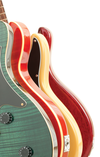
Lead Image © KrishnaKumar Sivaraman, 123RF.com
Troubleshooting and maintenance in Ceph
First Aid
In the past year in ADMIN magazine and ADMIN Online, I have introduced RADOS object store devices (OSDs), monitoring servers (MONs), and metadata servers (MDSs), along with the Ceph filesystem [1]. I looked at how the cluster takes care of internal redundancy of stored objects, what possibilities exist besides Ceph for accessing the data in the object store, and how to avoid pitfalls [2]. I also talked about CephX Ceph encryption and how a Ceph cluster could be used as a replacement for classic block storage in virtual environments [3]. Now, it's time to talk about what to do when things go wrong.
Those of you who already have a Ceph cluster will be familiar with the frequent visits to the wild and woolly world of system administration. Although various functions are integrated in Ceph that make working with the object store as pleasant as possible, this much is clear: Things can go wrong with a Ceph cluster, too (e.g., hard drives can die and run out of space). In this article, I aim to give you some tips, at least for the major topics of everyday admin life, so you know what to do – just in case.
How Healthy Is Your Cluster?
From an administrative point of view, it is quite interesting and useful to see what the cluster is doing at any given time. Ceph offers several ways to retrieve status information for the cluster. The catchiest command is undoubtedly:
ceph health
In an ideal case, this only creates one line as output – that is, HEALTH_OK
. If the output says HEALTH_WARN
or even HEALTH_ERR
, things are not quite so rosy. At that point, it is up to the administrator to obtain more accurate information about the state of the cluster. The ceph health
Buy ADMIN Magazine
Subscribe to our ADMIN Newsletters
Subscribe to our Linux Newsletters
Find Linux and Open Source Jobs
Most Popular
Support Our Work
ADMIN content is made possible with support from readers like you. Please consider contributing when you've found an article to be beneficial.







